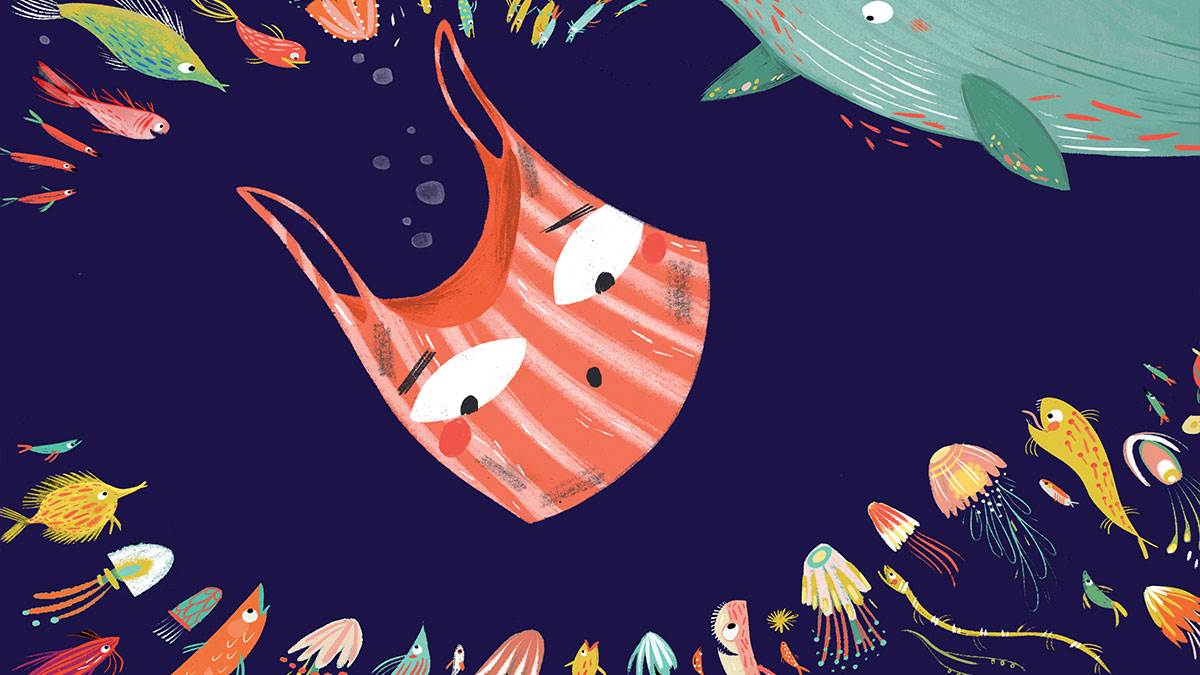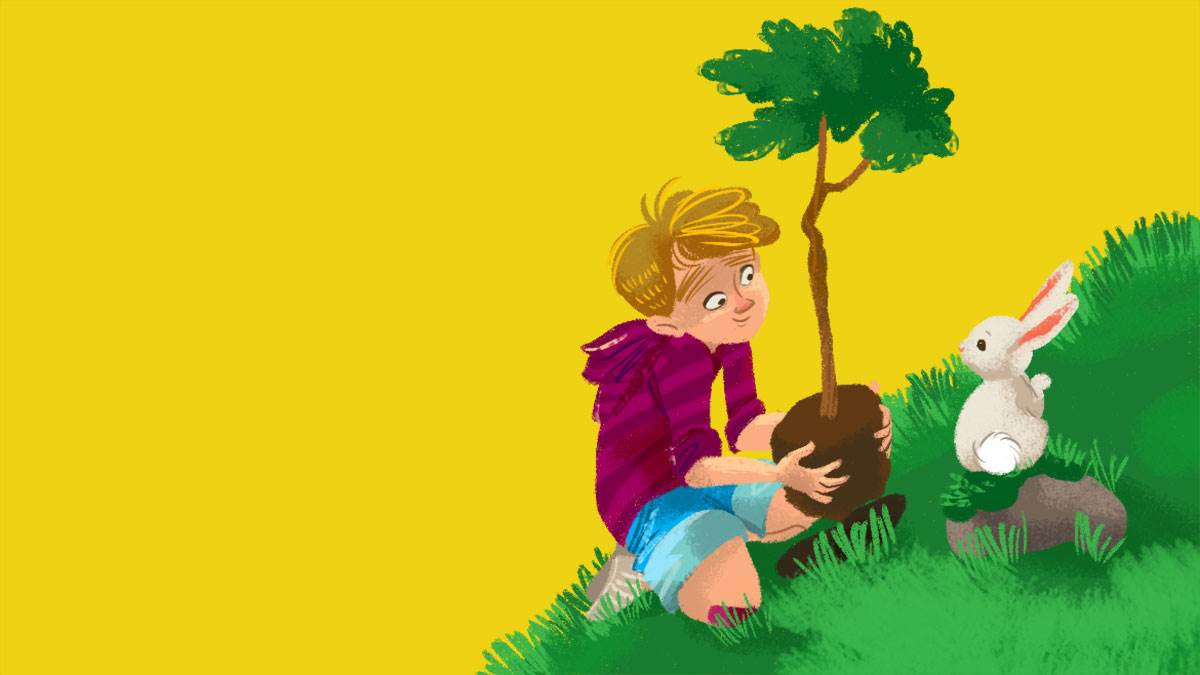Sarah Roberts’ Guide to Saving the Planet for children (and adults)
Published on: 12 June 2019 Author: Sarah Roberts
Here are ten ways to help children to fall in love with nature and feel more empowered about all the planet's problems, too.
 Illustration by Hannah Peck from Somebody Swallowed Stanley
Illustration by Hannah Peck from Somebody Swallowed Stanley
Did you know that we understand more about the surface of the moon than we do about the bottom of the ocean? Our planet is a miraculous place, made up of spectacular wild habitats and complex food chains, all of which remind us that we have a lot left to learn.
One thing we do know is that even from the relative comfort of our homes, we each have the ability to affect some of the most remote ecosystems on the planet. Often, without realising it, our actions and choices are killing off species that we may never even encounter in our everyday lives. This may sound scary, but it also works in reverse. Our actions and choices have the potential to SAVE these creatures and their ecosystems.
Now, more than ever, young people like Greta Thunberg have proven that they not only care about the planet’s future, but that their voices are loud enough to grip the attention of the whole world’s media.
But how can a child turn their voice into action?
Step 1: Set up a swap shop
‘Reduce, reuse, recycle’ is a brilliant motto – but it doesn’t have to stop at a bag for life or a reusable straw. Think about all the things you use on a day-to-day basis, such as toys, books and clothing. After a while, we outgrow our own belongings. Rather than buying new ones, why not set up a swap shop at school or with friends? This way you can reduce your carbon footprint and make these items last longer.
Step 2: Try Meat-free Mondays
By eating less beef and dairy foods, you can help cut carbon emissions (which are one of the main causes of climate change). Trying new foods and learning new recipes for a "meat-free Monday" can be a fun way to get the whole family or school involved in the quest to save the planet. If this sounds too easy, why not set the challenge as a "meat-free month"? Friends of the Earth provide a great support pack for this. Wherever possible, be sure to opt for locally-sourced produce, or even take it a step further and try growing your own...
Step 3: Make a "worm mountain" (formally known as a compost heap!)
Instead of throwing your food waste into the bin (where it will end up as landfill and release more greenhouse gases into the air), pile it up and marvel as tiny bacteria and insects break it down for you. This helps to reduce the amount of methane entering the atmosphere and is also a great educational opportunity to teach children about biodegradation and the carbon cycle. Furthermore, it creates compost, which can be really useful if you try the next step…
Step 4: Plant a tree – or grow a forest!
Trees are the natural answer to climate control – they remove carbon dioxide from the atmosphere and store it in the soil, which then helps to reduce climate change. Trees also provide a home for lots of different birds, insects and creatures. You can easily find tree seeds such as acorns, sweet chestnuts and conkers (horse chestnuts) wherever you find mature trees.
However, learning how to identify and grow trees adds an entirely new level of appreciation and understanding of nature. Don’t worry if you have no space to plant trees, as indoor plants also do a great job of cleaning the air.
By looking after plants, children can learn about the important conditions needed for plants to grow. There are lots of other ways to get involved in this step too; for example, you could help actually grow a forest by raising money for one of the many tree-planting organisations around the world!
 Illustration by Erika Meza for BookTrust
Illustration by Erika Meza for BookTrust
Step 5: Create somewhere wild
Even in the centre of a city, once you start looking you will be surprised at how many different creatures you can spot, such as squirrels, birds and foxes. Lots of wild animal species in the UK are under threat right now.
One of the best things you can do to help them is to re-wild an area in your garden or school playground. Sprinkle some soil and dead leaves around and let the grass, daisies and dandelions grow. Wildflowers provide excellent food for bees, who are in turn very important for pollinating food crops. You can also invite wild animals such as endangered hedgehogs in by making piles of leaves and twigs for them to nest in. Make sure that you provide gateways for these creatures to move freely to the next garden.
Step 6: Never drop litter
As my book Somebody Swallowed Stanley shows, even a single piece of litter can be very harmful to the animals that come into contact with it. Make sure all your litter goes in the bin and recycle as much waste as possible. If you do see litter where it doesn’t belong – on a pavement, in a hedgerow or on a beach – then don’t wait for an organised clean-up to fix it. Just find a responsible adult and ask them to pick it up and put it in the correct bin straightaway.
Step 7: Change the way you travel to school
By choosing to walk, run or cycle to school, you can help to reduce climate change. If you really do need to travel by car, why not ask your parents if you can carpool with friends?
Step 8: Play outside
Find your nearest park or green space to explore. Nature makes an awesome playground. You can make dens, go bug spotting, climb trees, play hide-and-seek, maybe even try wild swimming – the possibilities really are endless. Aside from all the health and learning benefits, by spending quality time with family or friends in the great outdoors, children will make fond memories and learn to love and appreciate the natural world. This provides the best motivation to protecting it.
Step 9: Become an inventor
Inventors see a problem and use their awesome imaginations to find exciting new solutions. By taking apart broken items and toys, you can learn how something works, identify a problem, figure out how to fix it or even make something that works even better. It is ultimately inventors who will be most able to solve the biggest problems our planet faces. The world needs as many creative minds as possible!
Step 10: Keep reading
The most significant thing that everyone can do is to stay educated and to spread important messages. Scientists are learning new things all the time, so some of the beliefs that we have today may not be true tomorrow. By reading up, watching documentaries and asking lots of questions, you will have a much better chance of making the best decisions and actions to help protect the planet.
Somebody Swallowed Stanley by Sarah Roberts and illustrated by Hannah Peck is out now in paperback (published by Scholastic).
Topics: Environment, Features






Add a comment